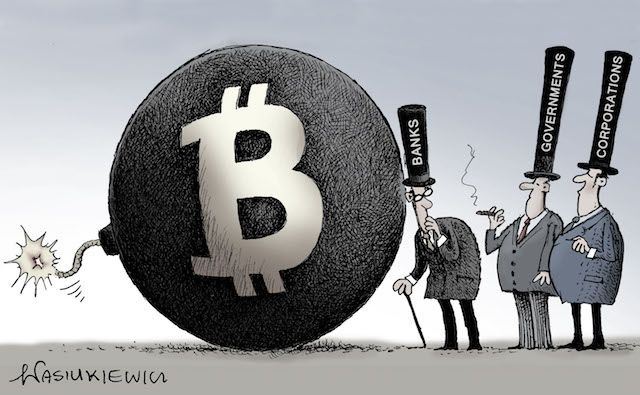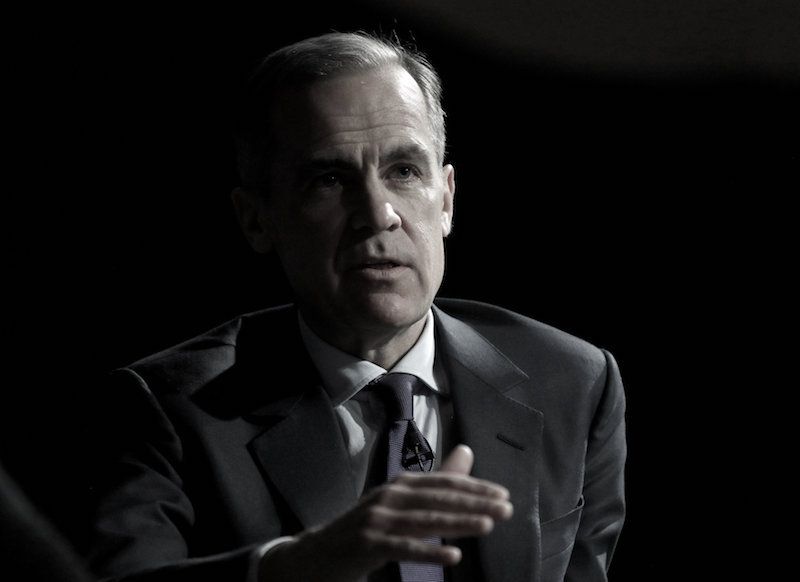Blockchain as a principle of governance
Blockchain, the fundamental technology behind new cryptocurrencies such as Bitcoin, is based on a novel governance system that is radically different from the centralized approach used today in banks, corporations and governments.

In a nutshell
- Blockchain presents an alternative to today’s principles of governance based on centralization, hierarchy and monopoly
- It offers remedies especially to the problems of cybersecurity
- Blockchain governance may work other fields, including banking, insurance and even politics
The hype around Bitcoin seems to have dissipated – for now. Some hail it as the advent of a libertarian utopia. Others demonize it as an agent of stateless anarchy. Some others still see in it a pyramid scheme and a fraud. What went – and still goes – largely unperceived, however, is that Bitcoin’s importance is not its market value, but the principle of governance behind it. The key insight about Bitcoin is that blockchain works.
Bitcoin is a cryptocurrency. Cryptocurrencies themselves are just one application of a more fundamental technology called blockchain. Blockchain is a digitized, decentralized, and distributed public ledger. Before reviewing how it works, it is important to clarify two concepts: “ledger” and “public.”
Every ledger provides a complete record of transactions over a determined cycle or even over the lifetime of an entity, whether it is a company, a group or a network. Blockchain’s ledger being public means that it must be visible to all at any time with no limitations – whereby “all” means every single person.
How does blockchain work? It arranges new information – for example, a new transaction – adding it to the public ledger as a completed block. Such blocks are recorded and added to the ledger in chronological order. However, the added block must first be validated by a majority of a distributed system of nodes – computers connected to the network. Validation means that individual nodes add the block to their versions of the ledger. The public ledger, therefore, exists in multiple versions of itself distributed through nodes. When an absolute majority of them agree to an identical form, a transaction is completed. This is also called nodal majoritarianism.
Principles of governance
On March 8, 2017, the monthly Harvard Business Review published an article titled “The Blockchain Will Do to the Financial System What the Internet did to Media.” On April 11, 2016, the service International Banker claimed in a featured article that “Bitcoin could disrupt the ability of central banks to exert control over the economy.” Do such – probably overstated – concerns point at something substantial in the governance structure that blockchain offers? The answer lies in the differences between systems of governance underlying most current structures, and blockchain.
The advantage of these principles is that they promote efficiency and allow for planning.
Contemporary structures of governance – for example, monetary policy, corporate hierarchies, the organization of chains of supply and value creation, even political institutions – rely on sets of principles. These are centralization, hierarchy, monopoly (each activity is performed by one unit; one unit is the owner of a process), the division of labor, trust in administration and isonomy (equality of units on the same level of the hierarchy). The advantage of these principles is that they promote efficiency and allow for planning. The central unit can plan and enforce its plan through the hierarchy. On the other hand, the structure becomes dependent on central planning, monopolies and administrative control.
Blockchain relies on different principles. It is a decentralized (distributed) mechanism of governance, functional rather than hierarchical, and it is conceived as a polypoly (any agent can supply or demand at any time; a multiplicity of agents must perform the same activity parallel to each other). In addition, blockchain combines elements of cooperation and competition, often simultaneously. For example, nodes must cooperate in order for a transaction to be added to the ledger. On the other hand, they compete on how quickly they validate transactions because only the first mover is rewarded by the system. Finally, since the verification of transactions occurs across the entire network, its guiding principle of governance is nodal majoritarianism.
There is yet another sharp contrast. Contemporary structures of governance tend to allow for or even privilege privacy. This applies not only to the privacy of users but especially to the privacy of the central, monopolistic decision-maker. Blockchain, on the other hand, might tolerate pseudonymous users. Nevertheless, as a distributed list (public ledger), it is committed to total transparency of transactions and nodes.
Blockchain uses
The principles of governance explained above are not necessarily in strict opposition to each other. However, more often than not, they are contradictory at least in practice. Even if blockchain does not displace the logic of centralism and division of labor, it can complement it in several ways with its decentralized (distributed), cooperative and competitive model.

Examples of different applications of blockchain include medical records, insurance, shareholding structures and accounting. In fact, any type of bureaucratic organization – whether polities, supply or value-creation chains, or smart contracts executed by computerized protocols – can benefit from their use. After all, data embedded and hashed into secure blockchains become immutable and inerasable. The technology can be applied to identity verification and in cloud storage. In the future, it could even be used to draft legislation and organize voting.
In cybersecurity especially, blockchain offers remedies. A database, for example, will always be exposed to the risk of data loss, hacking, malware, spyware, etc. If the database is centrally organized by a monopolistic unit, i.e. if the central database is unique, no matter how many firewalls are installed to safeguard it, it will be more vulnerable than a distributed system. If the same database is managed by nodal majoritarianism, it will be replicated many times and the risks mentioned above would only materialize if more than a half of all the nodes fall prey to them.
Will companies and state agents incorporate blockchain, or resist it?
Blockchain allows algorithms to perform extremely detailed tasks that do not add value to the chain of activities in which they are embedded. This is analogous to the medical profession, whose value consists in treating the patient, not keeping the record of his or her history. Similarly, the use of a database and not its protection adds value. Thus, blockchain reduces deadweight and therefore costs. It sets capacities free for other, even more, novel developments.
Questions and conclusion
These innovations will take time to influence society. The processes of exchange should be vetted before incorporating the new technology. In the meanwhile, many questions remain open about the principles of governance laid out by blockchain. What is, for example, the role of nodes – gatekeepers, superpowers, oligopolies? If blockchain is disruptive, who will be interested in its adoption and application to nonmonetary transactions? Does blockchain need a particular “ecosystem” to succeed?
Other types of questions revolve around how society responds to blockchain. How will regulators react? How will special interest groups advance their particularistic agendas? Will companies and state agents incorporate blockchain, or resist it? Will they be attracted or repelled by the overarching transparency requirement? How will centralized hierarchies adapt to functional decentralization and nodal majoritarianism?
Blockchain could revolutionize governance. It shows that a distributed system of verification can replace a centralized system of trust, at least regarding some aspects of bureaucratic management. This will probably be its most important contribution in the long term. A decentralized system of governance promises to create, through competition and cooperation, an environment in which different agents will be empowered and incentivized to become more productive.
Many questions remain about the details, however. The historian Arthur Schlesinger Jr. might have framed it correctly – before the advent of blockchain: “Science and technology revolutionize our lives, but memory, tradition and myth frame our response.”








